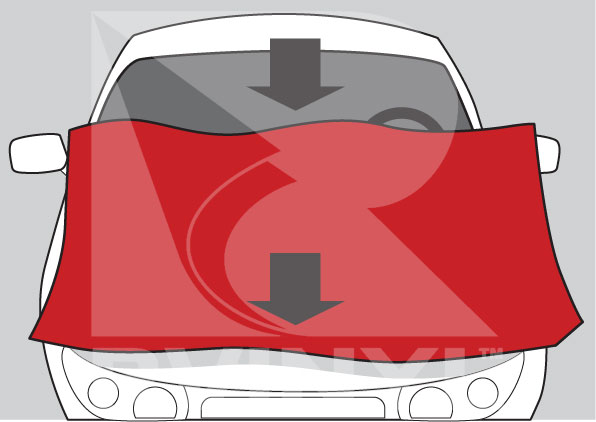
Step 3: Plan Vinyl Wrap Placement
Plan your method of attack. Lay your film (with the liner still on) on the application area to ensure that you have enough wrap for the job. We recommend applying the film to flatter areas first simply because these tend to be easier and more convenient to apply. Check to make sure there is nothing hindering your application, such as logos, hood ornaments, and other bulky objects that won’t be wrapped. We recommend researching how these objects stick to the car and the best method to remove them.